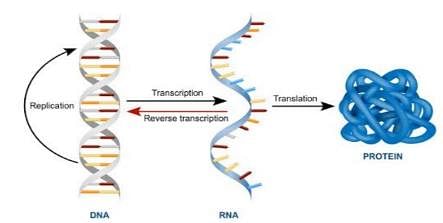NEET Exam > NEET Tests > JIPMER: Subject wise Tests & Practice Mock Tests 2024 > JIPMER Biology Mock Test - 2 - NEET MCQ
JIPMER Biology Mock Test - 2 - NEET MCQ
Test Description
30 Questions MCQ Test JIPMER: Subject wise Tests & Practice Mock Tests 2024 - JIPMER Biology Mock Test - 2
JIPMER Biology Mock Test - 2 for NEET 2024 is part of JIPMER: Subject wise Tests & Practice Mock Tests 2024 preparation. The JIPMER Biology Mock Test - 2 questions and answers have been
prepared according to the NEET exam syllabus.The JIPMER Biology Mock Test - 2 MCQs are made for NEET 2024 Exam. Find important
definitions, questions, notes, meanings, examples, exercises, MCQs and online tests for JIPMER Biology Mock Test - 2 below.
Solutions of JIPMER Biology Mock Test - 2 questions in English are available as part of our JIPMER: Subject wise Tests & Practice Mock Tests 2024 for NEET & JIPMER Biology Mock Test - 2 solutions in
Hindi for JIPMER: Subject wise Tests & Practice Mock Tests 2024 course. Download more important topics, notes, lectures and mock
test series for NEET Exam by signing up for free. Attempt JIPMER Biology Mock Test - 2 | 60 questions in 45 minutes | Mock test for NEET preparation | Free important questions MCQ to study JIPMER: Subject wise Tests & Practice Mock Tests 2024 for NEET Exam | Download free PDF with solutions
Detailed Solution for JIPMER Biology Mock Test - 2 - Question 1
JIPMER Biology Mock Test - 2 - Question 2
Which of the following is a characteristic of systemic circulation?
Detailed Solution for JIPMER Biology Mock Test - 2 - Question 2
| 1 Crore+ students have signed up on EduRev. Have you? Download the App |
JIPMER Biology Mock Test - 2 - Question 3
In a sample of centrifuged blood, the layer immediately beneath the plasma:
JIPMER Biology Mock Test - 2 - Question 4
Which is the correct sequence of arrangement of types of WBC in decreasing order in terms of number per mm3 of human blood?
Detailed Solution for JIPMER Biology Mock Test - 2 - Question 5
Detailed Solution for JIPMER Biology Mock Test - 2 - Question 6
Detailed Solution for JIPMER Biology Mock Test - 2 - Question 7
JIPMER Biology Mock Test - 2 - Question 9
Which state in India is the largest producer of sugarcane?
Detailed Solution for JIPMER Biology Mock Test - 2 - Question 9
Detailed Solution for JIPMER Biology Mock Test - 2 - Question 11
JIPMER Biology Mock Test - 2 - Question 12
Which of the following bacteria is utilized in gobar gas plant?
Detailed Solution for JIPMER Biology Mock Test - 2 - Question 13
Detailed Solution for JIPMER Biology Mock Test - 2 - Question 14
Detailed Solution for JIPMER Biology Mock Test - 2 - Question 15
Detailed Solution for JIPMER Biology Mock Test - 2 - Question 16
Detailed Solution for JIPMER Biology Mock Test - 2 - Question 17
JIPMER Biology Mock Test - 2 - Question 18
Which of the following lies between replication and translocation ?
Detailed Solution for JIPMER Biology Mock Test - 2 - Question 18
Detailed Solution for JIPMER Biology Mock Test - 2 - Question 19
JIPMER Biology Mock Test - 2 - Question 20
In Lathyrus odoratus, the cross between two purple flowered plants gave a pink-flowered progeny. This is due to
Detailed Solution for JIPMER Biology Mock Test - 2 - Question 20
JIPMER Biology Mock Test - 2 - Question 24
In human zygote, the male sex is determined by which of the following factors?
JIPMER Biology Mock Test - 2 - Question 25
The muscles responsible to move the eye ball are the
Detailed Solution for JIPMER Biology Mock Test - 2 - Question 26
Detailed Solution for JIPMER Biology Mock Test - 2 - Question 27
Detailed Solution for JIPMER Biology Mock Test - 2 - Question 28
Detailed Solution for JIPMER Biology Mock Test - 2 - Question 29
View more questions
|
4 videos|8 docs|51 tests
|
Information about JIPMER Biology Mock Test - 2 Page
In this test you can find the Exam questions for JIPMER Biology Mock Test - 2 solved & explained in the simplest way possible.
Besides giving Questions and answers for JIPMER Biology Mock Test - 2, EduRev gives you an ample number of Online tests for practice
|
4 videos|8 docs|51 tests
|
Download as PDF


















